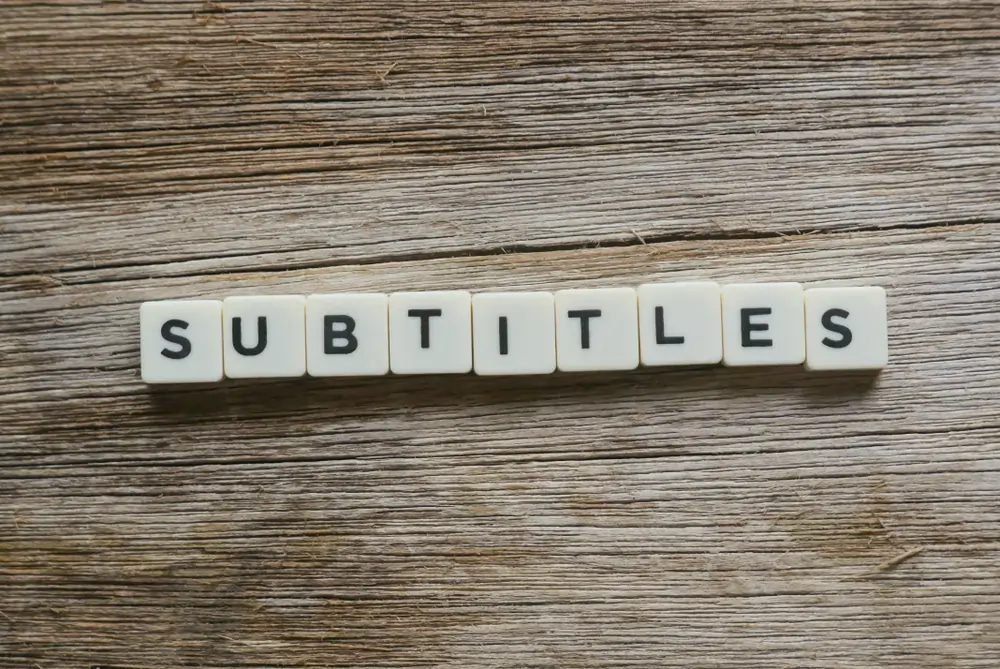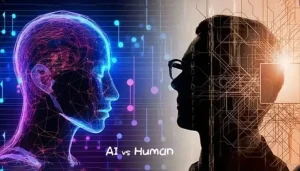When navigating multimedia content, the terms “captions” and “subtitles” are often misunderstood or used interchangeably, but they serve distinct purposes. At TransLinguist, we offer both services to meet diverse accessibility and linguistic needs, ensuring seamless content comprehension for all audiences.
Captions: Enhancing Accessibility
Captions are text versions of the spoken word and non-verbal sounds, such as music or background noise, designed primarily for viewers who are deaf or hard of hearing. They are not only essential for accessibility but also enhance engagement and understanding for those in sound-sensitive environments. Captions typically appear in the same language as the audio, representing every spoken word, sound cue, and speaker identification. They provide additional context, ensuring that users can fully understand the multimedia content.
Our Subtitle & Captioning services offer accurate captioning solutions tailored to your media. We specialize in closed captions, which can be turned on or off, making them ideal for broadcasting and video platforms.
Subtitles: Breaking Language Barriers
Subtitles, unlike captions, translate spoken content from one language to another. They assume that the audience can hear the audio but may not understand the language spoken. Subtitles are commonly used for films, webinars, and other media that target international audiences.
At TransLinguist, we offer professional subtitle services to meet global communication needs. Our subtitles go beyond basic translations, incorporating cultural nuances to ensure that the message remains impactful across borders. Whether you’re presenting in a different language or broadcasting a film, our Web & App Localization services ensure seamless integration of subtitles into your multimedia content.
Key Differences and Applications
Understanding the difference between captions and subtitles is crucial for selecting the right service for your media. Captions are used primarily to assist those with hearing impairments, providing a full transcription of the audio, including background noises, speaker identifications, and sound effects. Subtitles, on the other hand, are translations aimed at people who can hear the audio but don’t speak the language.
While captions focus on aiding accessibility for the deaf and hard-of-hearing community, subtitles play an essential role in reaching international audiences by providing translations for non-native speakers. TransLinguist’s subtitle services ensure the highest level of accuracy, cultural relevance, and audience engagement.
Explore our Transcription services to further enhance the accessibility of your content, allowing the spoken word to be converted into written formats across languages.
Types of Captions and Subtitles
Both captions and subtitles can be broken down into various types:
- Closed Captions: These are the most commonly used, allowing viewers to toggle captions on or off. They are suitable for broadcasting and digital media.
- Open Captions: These captions are always visible on the screen and cannot be turned off. They’re typically used in environments where viewers are unlikely to understand the spoken language.
- Subtitles for the Deaf or Hard of Hearing (SDH): A hybrid form that combines subtitles with elements of captions, such as sound effects and speaker identification.
Our Machine Translation Post Editing service ensures that both captions and subtitles are highly accurate, even when generated through machine learning tools, with human oversight for quality control.
The Role of Technology in Captioning and Subtitling
Technology plays a pivotal role in the creation of both captions and subtitles, particularly with the rise of artificial intelligence and machine learning. AI-powered software can generate real-time captions and subtitles, especially in live broadcasts or events. However, human editors are still essential for ensuring accuracy, particularly in nuanced language or specialized contexts.
At TransLinguist, we integrate cutting-edge technology with expert human oversight to deliver flawless captioning and subtitling solutions. Whether you need real-time captions for live events or accurate subtitles for pre-recorded content, our Hybrid Solutions guarantee quality and precision.
At TransLinguist, we merge technology and human expertise to provide unparalleled captioning and subtitling services, meeting the needs of diverse audiences. As content consumption grows increasingly global, captions ensure accessibility for the deaf or hard of hearing, while subtitles break language barriers by translating dialogue for non-native speakers. Whether you’re hosting an international event or broadcasting media to a global audience, our solutions—including Remote Simultaneous Interpretation deliver accuracy and accessibility across platforms.
Unlike captions, which transcribe both speech and sound, subtitles focus purely on translating spoken language. The key is understanding when and where to use each. Closed captions provide the flexibility to be toggled on or off, making them ideal for broadcast and digital platforms, while open captions remain visible throughout the content. Our Voiceover services add another layer of localization by ensuring both audio and text are accessible.
Closed Captions vs. Subtitles: The Growing Role of AI
While AI-generated captions and subtitles are becoming more prevalent, the need for human oversight remains essential. Automated systems, though efficient, often miss nuances in complex dialogue or specialized terminology. At TransLinguist, our AI-assisted captioning is always followed by human review through our Machine Translation Post-editing, ensuring top-notch accuracy.
Multilingual Support and Cultural Relevance
For global brands, subtitles serve as a critical tool for expanding audience reach. At TransLinguist, we understand the importance of cultural sensitivity in translations. Our Web & App Localization service ensures that translated subtitles not only convey the correct message but also reflect cultural nuances. Whether you’re localizing a website or delivering educational content to multilingual audiences, our subtitles maintain the integrity of your message.
Live Events and Real-Time Captions
Live events add another layer of complexity to captioning and subtitling. In fast-paced environments, accuracy is paramount, and any delays can affect audience engagement. For hybrid or fully virtual events, our Remote Simultaneous Interpretation services allow real-time translation of live speeches, ensuring no language barriers disrupt the experience. We also provide live captions and subtitles to keep remote and in-person attendees engaged.
Enhancing SEO and Accessibility
One of the lesser-known benefits of captions and subtitles is their impact on SEO. Search engines can’t “watch” videos, but they can crawl through text. By incorporating captions and transcripts into your media, you’re not only making content accessible to wider audiences but also improving search visibility. At TransLinguist, we offer Multilingual SEO services to optimize your multimedia content for search engines in various languages, further enhancing your global reach.
Conclusion
Choosing between captions and subtitles largely depends on your audience’s needs. Captions are essential for ensuring accessibility, while subtitles open doors to new language markets. At TransLinguist, we provide both solutions, customized to your specific project and audience requirements. Whether you’re broadcasting a corporate event, localizing an app, or simply making your content accessible to all, our Subtitle & Captioning services will ensure your message is both seen and understood.
With our expert team and cutting-edge technology, we strive to meet the highest standards of accuracy, cultural relevance, and audience engagement. Discover how we can elevate your content with professional captioning and subtitling solutions tailored to your needs.



